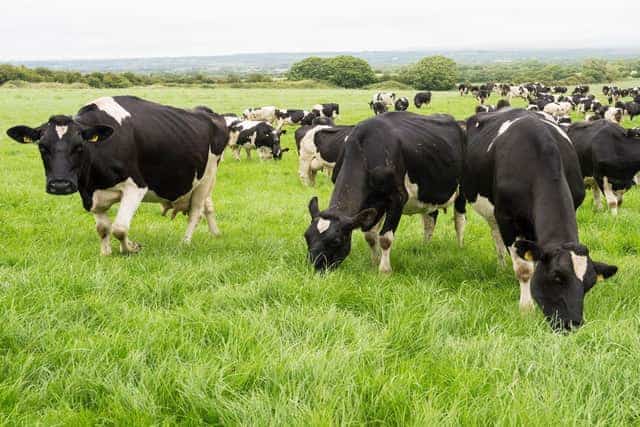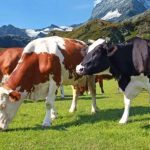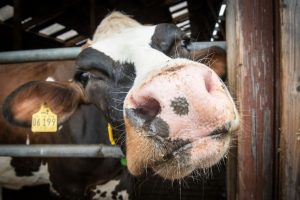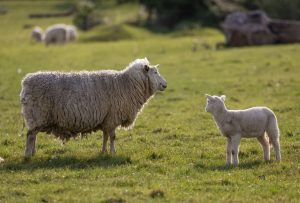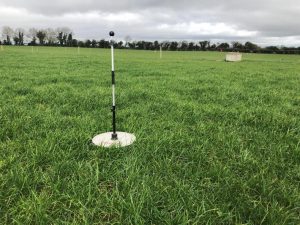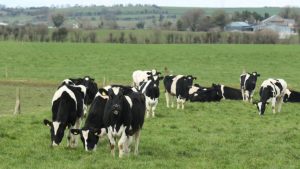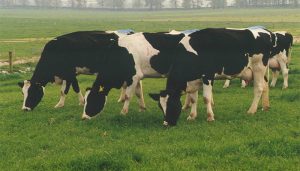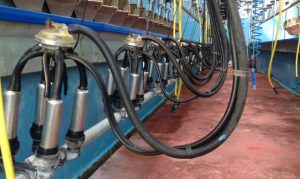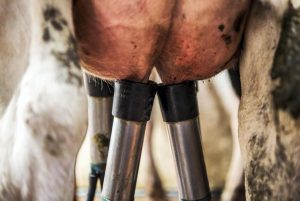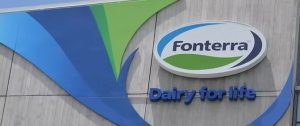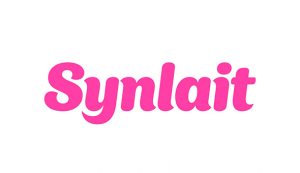
It has been one of the latest springs in living memory.
Meanwhile, milk producers are striving to respond to a combination of still challenging input costs and a declining milk price.
Earlier this week, Farming Life’s Richard Halleron sat down with United Feeds’ Jenny Hamilton and Chloe Kyle to discuss two key issues: the effective feeding of cows and the importance of making high-quality, second cut silage.
Implications of underfeeding cows
With milk price decreases, understandably feed levels are under consideration.
Sensible decisions regarding nutrition need to ensure efficient feed utilisation that maintains production and cow health.
When it comes to performance, energy is the primary limiting factor in most cases.

Put very simply:Energy input = Energy output.
This is best case scenario, which is often not the case in nutrition because of feed efficiency and feed conversion. Certainly, output cannot exceed input.
Jenny Hamilton explained:“Cows require energy for maintenance, production, reproduction, growth and health. Exact energy partition is unknown and much like us humans, individual.
“It will depend on age, stage of lactation, genetics etc. so if we reduce energy input across the herd, it’s difficult to pinpoint exactly what that will impact.”
She added:“Milk yield changes are easy to monitor and value but consider the costs you cannot see.
“For every litre of milk produced there is an energy value associated, evidently the higher the milk quality, the more energy is required.”
According to the United Feeds’ nutritionist, one litre of milk @ 4.0% butterfat & 3.0-3.2% protein requires 5.3MJ.
If we reduce concentrate feed rate by 2kgbut do not replace this in the diet, this equates to roughly 25MJ less.
Assuming an average milk yield of 30L which isn’t affected by the energy loss i.e. remains at 30L, this is reducing the energy available per litre of milk by 0.8MJ/L (15%).
Jenny further explained:“Technically, 4.5MJ only supports a milk quality of 3% butterfat and 2.8% protein, but cows will mobilise body reserves to support production.
“This is a colossal hidden cost.½ of a BCS for a 650kg cow = 36kg liveweight. Every 1kg lost provides 16MJ of energy. However, to gain that 1kg back requires 32-38MJ, at least twice the energy.
“It is very expensive both energetically and financially for a cow to increase body condition score to then lose it to support milk production. This is without considering the cost implications of potential fertility issues.”
So how can farmers reduce concentrate feed levels safely?
“The more information that can be provided, the more accurate your nutritional adviser can be with recommendations,” Jenny explained.
So, assumptions can be costly. Farmers should be able to provide accurate total mixed ration (TMR) or grass intakes.
They should also check that feed tables are set up correctly.
“If cows are being fed efficiently we can only reduce concentrate feed rate if we replace with forage,” said Hamilton.
“If cows are not being fed efficiently, in other words a flat rate across a wide range of yields it would pay to target feed the productive cows.
“Farmers should, therefore, consider batching cows so they can be fed to different M+ levels, or feed to yield in the parlour using tail tapes or parlour software systems.
Forage quality and intakes are crucial to keeping costs down and performance up. Increasing forage intakes is an option if cows will eat more.
This is an issue for some on 2022 cuts. But there’s opportunity for better quality 2023 cuts to be introduced over the next few months.
For housed herds the key is palatability, digestibility and accessibility.
Regular push ups, feed space and ensuring cow mobility is good so cows travel to eat. For grazing herds, ensure expectations match reality in terms of M+ off grass.
With later turnouts. For many, grass quality is likely to be reduced during first rotation, and unless clean outs are managed quality could be reduced in subsequent rotations too.
Grass utilisation and cow mobility are fundamental to achieving high intakes.
Farmers should work closely with their nutritional adviser to determine accurate diets and assess feed rates.
The impact forage quality and forage intakes have on margin over concentrate can be summarised as follows.
For a cow producing 30L of milk per day, the feeding rate to get this level of performance is 0.3kg/L for good silage; 0.4kg/L from average silage and 0143kg/L for poor silage.
Milk from forage levels work out at 12L from good silage; 5.8L from average silage and 3.8L from poor silage.
This equates to a margin over concentrate of 21.1, 17.1 and 15.7 pence per litre respectively for good, average and poor silage.
This equates to £6.35, £5,12 and £4.73 per head per day, again in terms of good, average and poor quality silage
Farmers should keep these relationships in mind when considering cutting dates for silage this year.
Note that the difference in margin over concentrate (MOC) between good silage and poor silage for 100 cows equates to £162/day, £4860/month or £29,160 over a 6-month feeding period.
These costings are based on a 30L average output per day @ 33ppl plus a concentrate price of £395/t
Good silage equates to a 12kg dry matter intake (DMI) @ 11.8 metabolisable energy (ME) value.
Average silage equates to a 10.5kg DMI @ 10.5ME while poor silage equates to a 10kg DMI @ 10ME.
Second Cut Silage – getting the basics right.
As the first cut silage season is underway now is the time to start reviewing a second cut silage nutrient plan.
As United Feeds’ agronomist Chloe Kyle points out: farmers may not be able to control input costs or the weather. However, they can control is the type, form, and amount of nutrients they apply to our silage ground.
Ideally, having all this planned and ready for application within one week post harvesting of first cuts is appropriate.
So what are the key points to be addressed in compiling a second cut nutrient plan.
According to Chloe, it all starts with soil pH values.
She added:“Courtesy of a recent soil test, it will be possible to check that all silage ground is at the adequate pH level 6.3-6.5.
“If not and if lime has not yet been applied, then there is still a window to apply granulated lime to enhance nutrient availability for second cut.
“Five days after slurry application granulated lime can be applied and unlike ground lime it is faster acting and starts neutralising acidity straight away.”
As a rule of thumb an application of 2000 gallons/acre of dairy cow slurry will meet most second cut requirements with the correct inorganic fertiliser (only topping up what slurry cannot supply).
It is important again to refer to your recent soil test results and check what fields need an application of phosphate (P) and, more importantly, potash (K) as slurry is more abundant in K than nitrogen (N) or P.
Chloe further explained: “Fields regularly cut for silage have a higher requirement for P and K due to the high removal of these nutrients by the crop.
“For example, a 30 % dry matter (DM) silage contains 2.3 kg of P and 9.9 kg of K per tonne of fresh material.
“The addition of K is particularly important to maintain grass yields.
“Slurry applications should be prioritised on the silage area to replenish the K removed in the previous silage crop.
The general P and K recommendations for 2nd cut silage in RB209 are as follows.
Where phosphate is concerned, 20 units/ac can be applied on soils with a Soil Index of 0,1 or 2. Where the Soil index is above these values, no fertiliser phosphate should be applied.
In the case of potash, the recommended application values are as follows: 96 units/ac (Soil Index 0); 80 units (Soil Index 1); 72 units (Soil Index 2) and 32 units (Soil Index 3). There is no requirement for additional potash on Index 4 soils
So, how much P and K will slurry provide?
According to Chloe, if slurry has not been sample tested in a lab, then it’s a case of using the RB209 book value for 6 % DM cattle slurry.
This gives us the following P and K values for each 1,000 gallons/acre applied.
Where the soil index is 2 or greater for P and K:
11 units/acre of P
22 units/acre of K
Where the soil index is 0 or 1 for P and K:
5 units/acre of P
20 units/acre of K
Chloe continued: “I recommend farmers to get their slurries analysed as many variations can appear due to animal weight, breed, feed type and tank dilutions. For fields with a P & K index at 3 and above it is recommended to turn down slurry rates as over application can lead to leaching and environmental pollution.”
Soil test reports also determine chemical fertiliser application rates.
The United Feeds’ agronomist commented: “Farmers can then see exactly what specific fields require and the extra application of nutrients over and above those already supplied from slurry applications.
“It may be that a zero P fertiliser can be applied, if the P index at 2.0 or above.
“A straight nitrogen plus sulphur product will meet the required need, if slurry has provided enough P & K.”
As a rule of thumb, second cut ground with a P and K Index of 2, which has received 2,000g/ac of cattle slurry, will require 62 units of N, 0 units of P and 28 units of K/ac
However, second cut ground with a P and K index of 1, again receiving 2,000g/ac of cattle slurry, will require 68 units of N, 10 units of P and 40 units of K/ac.
Sulphur (S) improves N use efficiency as it helps drive the movement of N from the soil into the plant roots and up to the leaf where it forms chlorophyll.
This then drives the process of photosynthesis and the manufacture of sugars and proteins to produce a high quality, high feed value grass silage crop.
For swards with good yield potential, it is advised to apply 80 units/acre of N and 25 units/acre of Sulphur for second cut.
Farmers should always account for slurry N first. But using an S containing inorganic fertiliser is vital as slurry and soil supply are unlikely to meet crop demand.
Chloe Kyle concluded: “Slurry should be applied as soon after the first cut as possible, and then apply the fertiliser a week later.
“If slurry isn’t used, fertiliser should be spread as soon as possible. Delays reduce second cut yields.”
About United Feeds
Just as farming has to respond to fast changing market conditions, United Feeds have led the way in delivering bespoke nutritional solutions that allow customers to meet their requirements in the most efficient way possible.
United Feeds’ products and advisory services are developed by uniquely qualified and experienced teams, who are committed to working with customers on a highly personalised basis.
It is this total commitment to delivering such a bespoke service that encapsulates the very essence of what United Feeds is all about.
United Feeds pride themselves on the innovative nutritional solutions and comprehensive advice that they can offer to enhance all aspects of performance on farm.
Both the sales & technical teams are nutritionally trained and on the Feed Adviser Register.
A large emphasis is placed on continuous staff training so United Feeds’ advisers are up to date with the latest technologies and nutritional products available to the market.
Communication with customers is key to maximising farm performance. United Feeds offer a range of services including forage analysis and diet analysis with the use of DietCheck® software.
